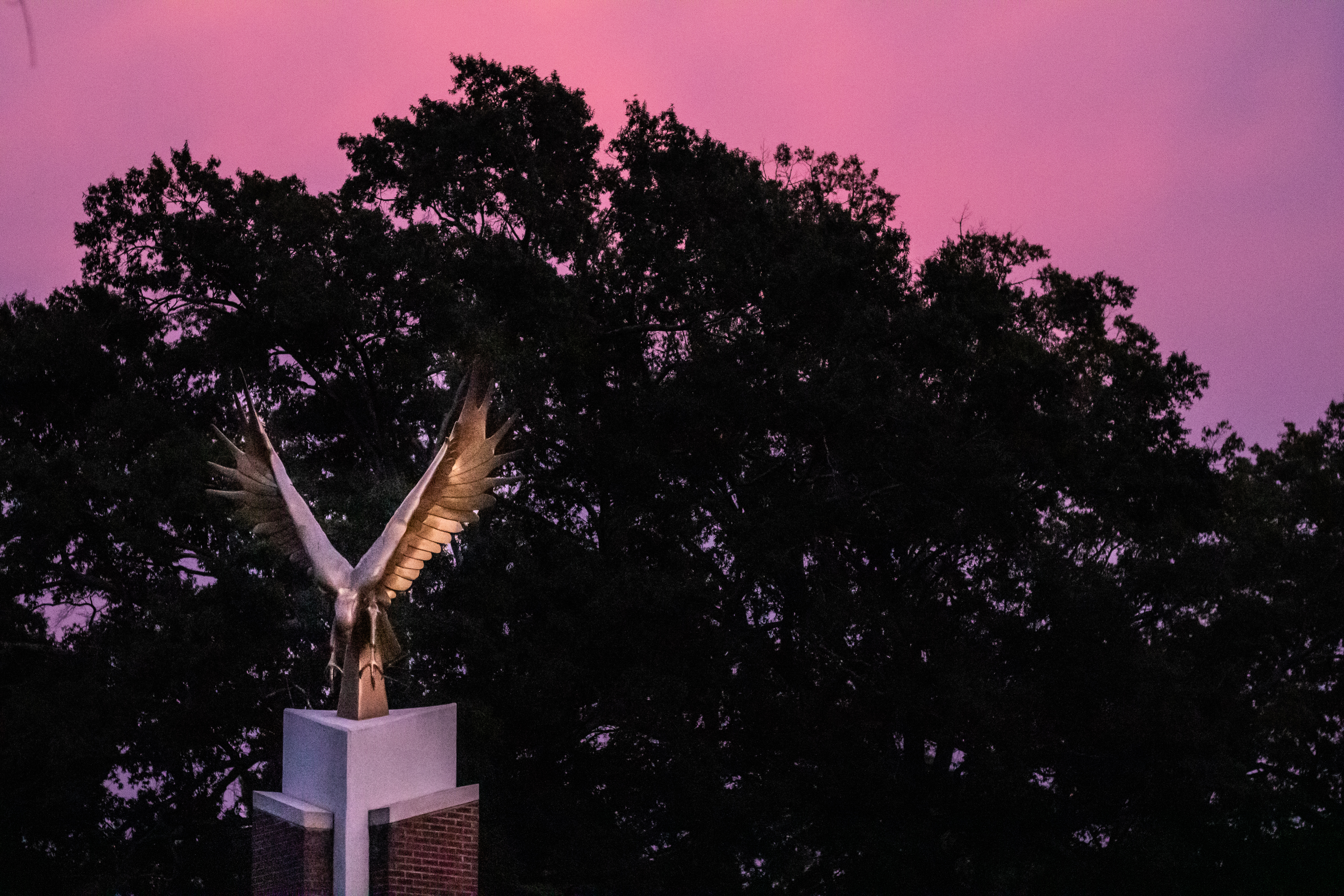A quick stroll around campus reveals a variety of large, beautiful and often bizarre works of art. These sculptures of various mediums are a vital part of students’ walk to class, but most students know almost nothing about them.
According to “The Garnet and Gold,” founding president David Bancroft Johnson emphasized public art on campus, which eventually led to an ongoing program in which art and design students can create permanent works of public art that have become staples of Winthrop’s campus.
- Metamorphosis – While most students know her simply as “Bench Lady,” the bronze woman who sits reading at the end of Scholars Walk is officially called “Metamorphosis.” The statue was commissioned by the class of 1964 in recognition of their 50 year class reunion. The 100 pound statue highlights Winthrop’s history as a teacher training school in the early 1900s by depicting a student in an Edwardian-era Winthrop uniform. The butterfly on her book represents the class of 1964, as the butterfly was a symbol they used to represent the “metamorphosis” students experience at Winthrop.

- The Amphibian Quartet – The performing frogs near the amphitheatre have a surprising amount of meaning behind them. The five bronze frogs were created by artist David Stellerberg and donated to the campus by Charlotte businessman and philanthropist Irwin Belk to pay tribute to Rock Hill’s annual Come-See-Me Festival. In addition, all five of them have names. The two violinists are Igor and Leopold Frogawaski, the trumpeteers are Dizzy the Cheeks and Louie the Lip, and the ballerina is La Frogette.

- Gold Tree – Gold Tree is a 20 foot tall metal sculpture standing between Scholars Walk and the Conservatory of Music. The tree was created by Thomas Whichard, who graduated with a Bachelor of Fine Arts in 2012, and is Whichard’s first large, permanent outdoor sculpture.

- Purple Worm – Purple Worm is a large steel sculpture created by art major Rebecca Jane Hooper. The sculpture was installed as a public gathering place, and is often regarded as a landmark and used as an unorthodox seating place.

- The Winthrop Eagle – Irwin Belk, the same philanthropist who donated the Amphibian Quartet, also commissioned the iconic Winthrop Eagle statue in 2005. The statue and concrete pedestal were created by artist Jon Hair, and was inspired by the university athletics logo. The statue itself would go on to inspire the university’s redesigned official logo in 2018. The eagle and its pedestal stand at a combined 32 feet tall.
For more information on these and other works of public art on campus, visit https://www.winthrop.edu/virtualtour/arttour.aspx
Photos: Olivia Esselman/ The Johnsonian





